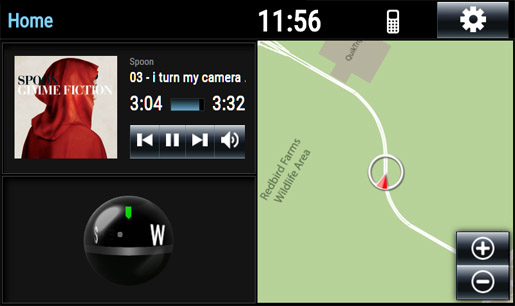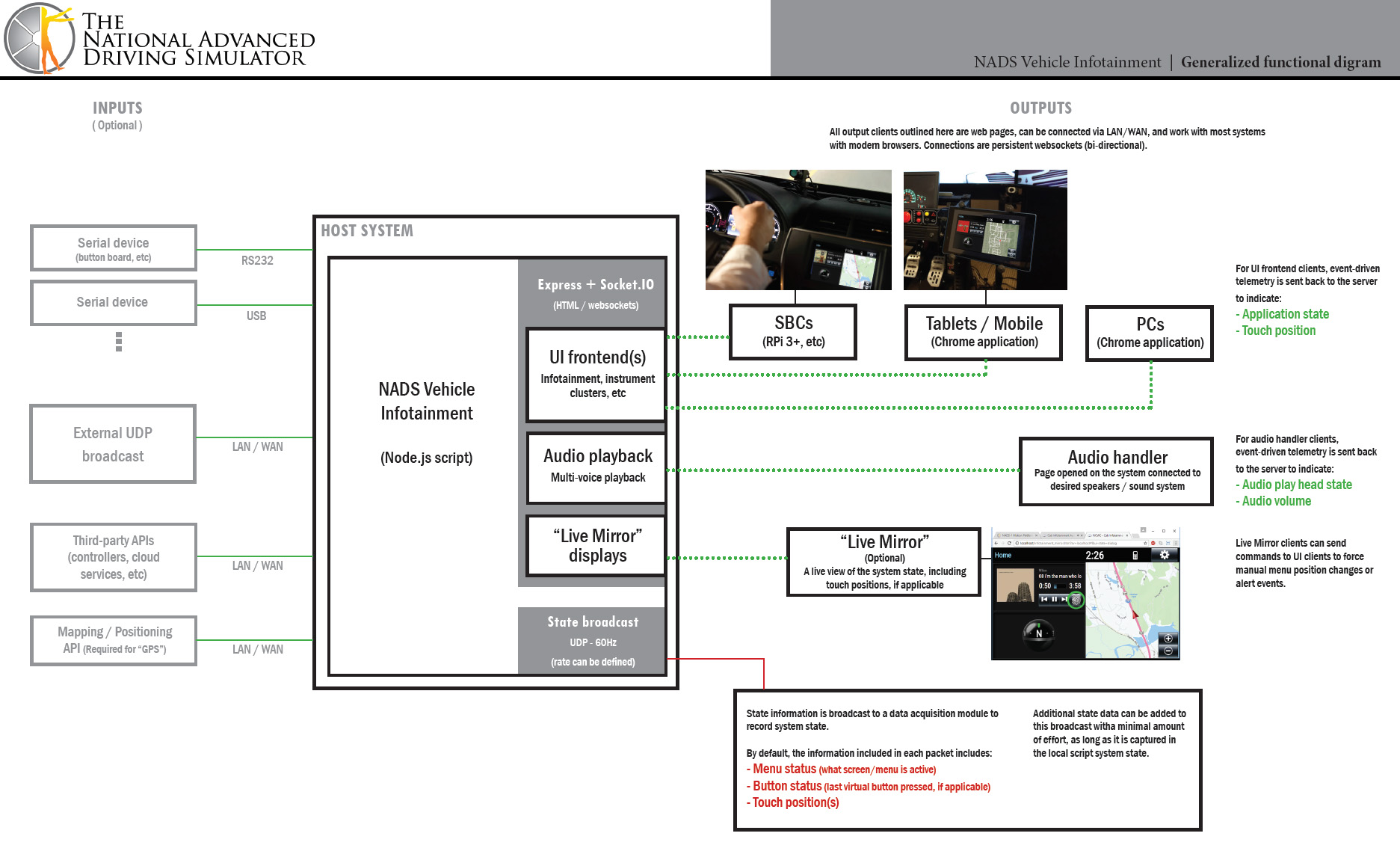Difference between revisions of "Infotainment System"
Steve Cable (Talk | contribs) |
Steve Cable (Talk | contribs) |
||
| Line 5: | Line 5: | ||
</div> | </div> | ||
</html> | </html> | ||
| − | NADS has developed an extensible architecture to model interactive displays in simulator vehicles. These displays support touch screens, and the application logs the user’s interaction data synchronized with the miniSim data acquisition system. | + | NADS has developed an extensible architecture to model interactive displays in simulator vehicles. These displays support touch screens, and the application logs the user’s interaction data synchronized with the miniSim data acquisition system. Applications include infotainment systems, instrument panel displays, heads-up displays (HUDs), etc. |
| − | + | The standard system available with miniSim models a typical OEM infotainment system including the following functionality: | |
*Radio (requires internet connection) | *Radio (requires internet connection) | ||
*MP3 playback | *MP3 playback | ||
Revision as of 22:47, 23 May 2019

The standard system available with miniSim models a typical OEM infotainment system including the following functionality:
- Radio (requires internet connection)
- MP3 playback
- Navigation (NADS Springfield map only)
- Platform Independent (iOS, Android, Windows, Raspberry Pi)
Architecture

Host script
This is blah blah
Audio handler(s)
By default, a single audio page (infotainment_audio.htm) is included. This page can handle 3 channels of stereo playback:
- Media playback
- Alert playback (temporarily mutes media playback on play)
- Notify playback
Display/input pages
This is where it gets interesting.







